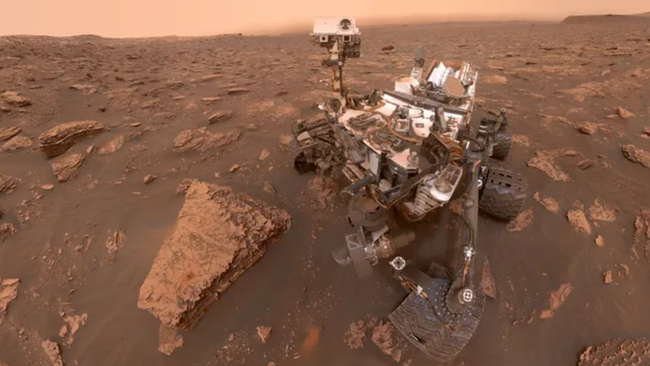Catching the romantic side of this phenomenon, water and salt might be one of the causes why methane seeps in the different points on Mars.

Interestingly, since 2012, the Curiosity rover of the NASA has continuously identified methane on Mars, and this was mainly at the place of its landing inside the 96-mile-wide (154 kilometers)- width Gale Crater.
To illustrate, it is seemingly strange that the methane on Mars is acting weirdly. It is not Showing itself in broad daylight, it is increasing and decreasing with the season, and it is rising very quickly without any prior notification to the levels 40 times higher than normal. Pero ang isang bagay pa, ang nas Morbo na ‘yon hindi nagkakaroon ng sukarang mataas paanauhin sa isang kisimulang Mars atmosphere at din sabi na hindi pa ring ito nakalapat na mga lugar na punong puno ng reng de Mars. Let’s blast off to Curiosity rover’s landing site – a strikingly scenic area called Gale Crater.
NASA team scientists (paleontologists Alexander Pavlov first of all) as a group might now have even a partial answer to that. The team further suspects that the Martian methane can be enclosed within salt-hydrate deposit under the regolith at the Gale crater. Methane-rich ice could unnaturally melt during the day time solar heating resulting in a weakened crust allowing the methane to slip through the cracks at nights. But the same kind of vulnerable situation is created when a heavy one-ton rover with its full mass driving over the crust can also crack the crust, and thus the methane escapes in a one-time explosive release. (Yes, one adds it to lulling of infant.)
The scientists conducted the experiment here on Earth using Martian simulant dust (a salt called perchlorate, which exists widely on Mars) and neon, a noble gas, as an errand for methane. During inside tests that were carried out at Goddard Space Flight Center’s facility for Mars simulation, salt was proven to be able to form and trap methane beneath the surface under some circumstances.
While the solidified salt can mildly explain the irregular behavior of Martian methane, scientists yet cannot understand how methane actually formed on Mars in the first place. On Earth, methane is usually a biomaterial that is created by organisms,’ but we have not noticed signs of life, yet, on Mars.
Let’s leave no doubt on this – methane might not be a proof of life, as it can be originated from different sources like geological processes.
“It’s a topographic story with a lot of plot turns and upsides,” claims brainy Ashwin Vasavada, Curiosity’s project scientist at NASA’s Jet Propulsion Laboratory in Southern California as stated in his statement. Some of the methane studies will be left to make ground observations by future vehicles during missions that don’t have the objective of answering these very specific scientific queries.
The article on the team’s research was published on the March 9, 2024‘s edition the Journal of Geophysical Research.
Do not forget to share your opinion with us to provide you with the best posts !



0 Comments